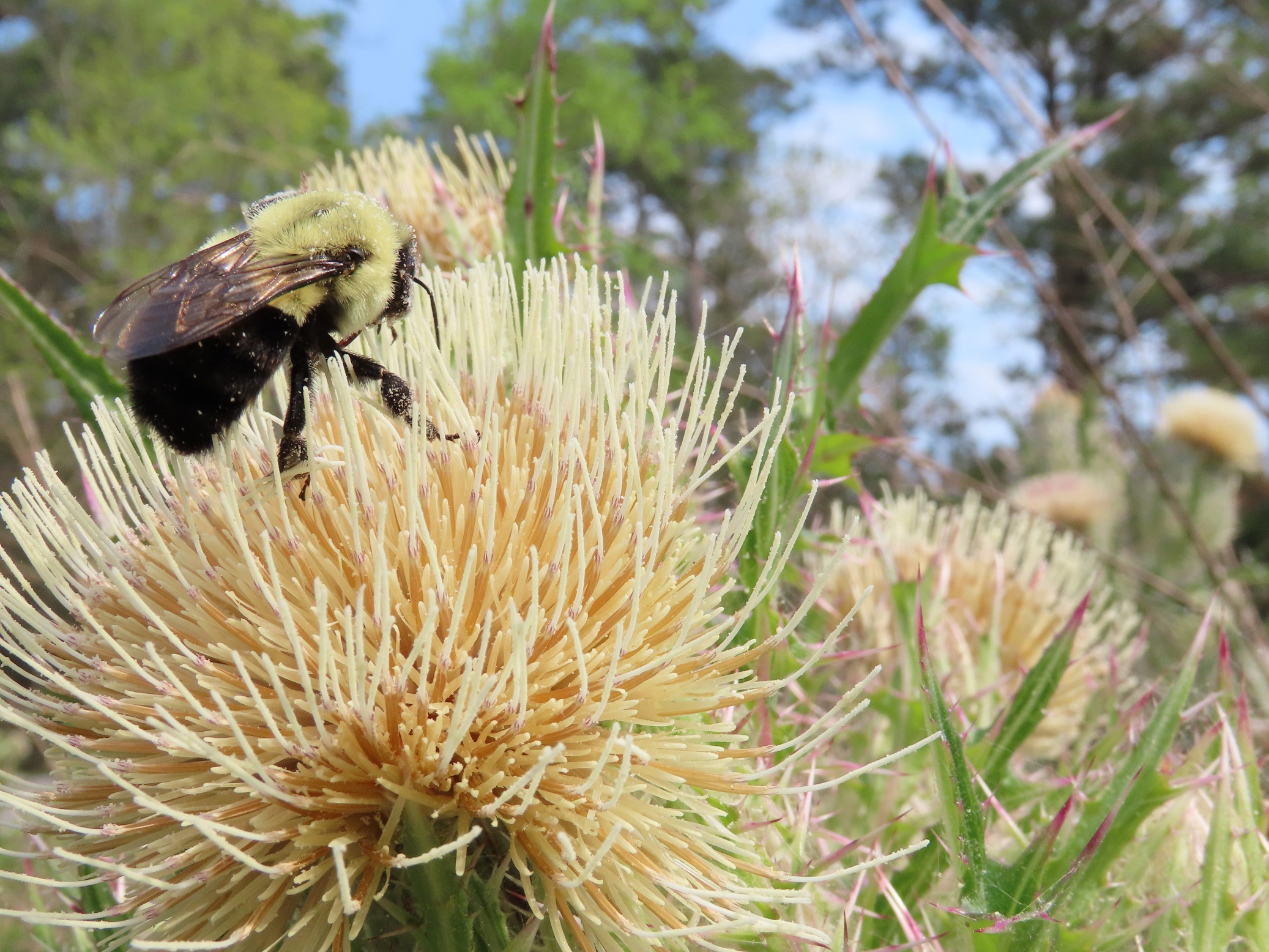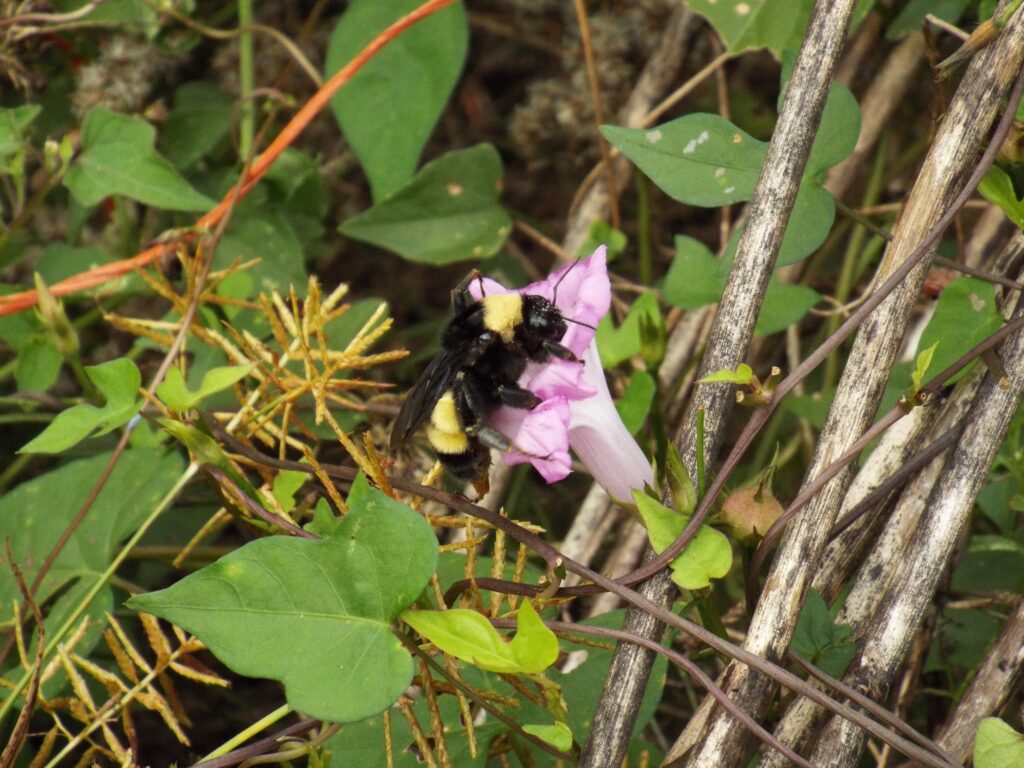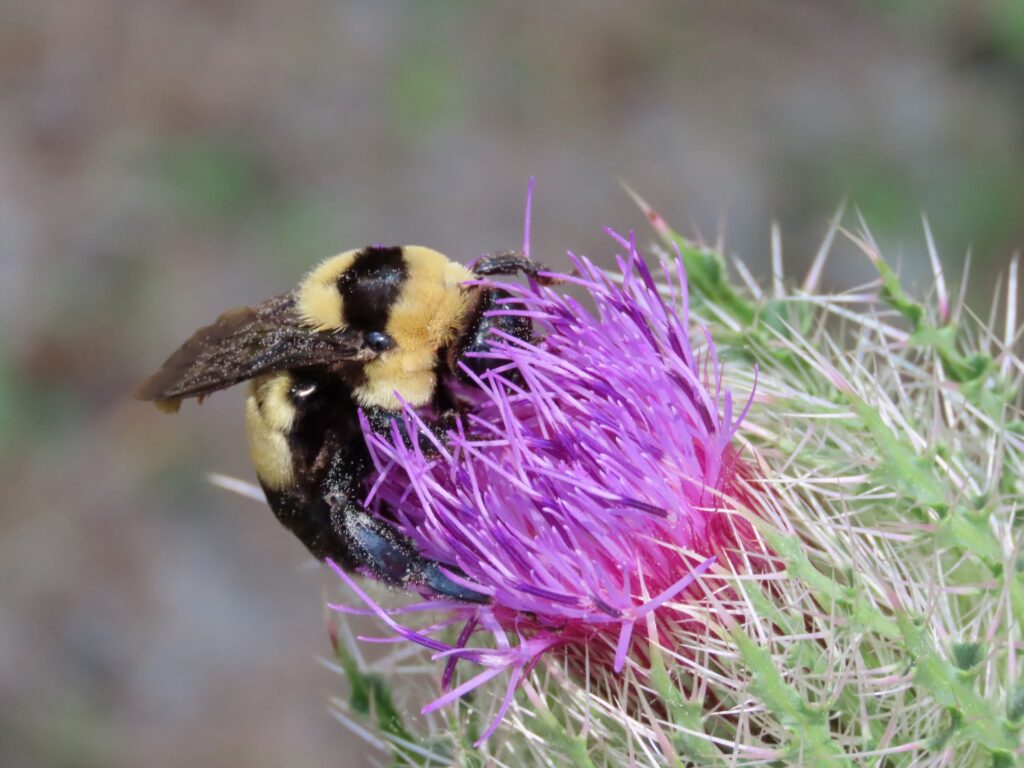



This week for Flora and Fauna Friday, we have our busy buzzy bicolored blossom buckling Bumblebees, of genus Bombus.
Here in the Lowcountry of South Carolina we have five species of Bumblebee. Each has that classic black and yellow coloration but they all vary slightly in the patterning it takes on. The Eastern Bumblebee (B. impatiens) is both our most common and our smallest species of Bumblebee, measuring one-half to three-quarters of an inch in length. It has a pastel yellow thorax with a small black spot in the middle, a single thin band of yellow around the waist, a yellow head, and a somewhat shaggy appearance. The Two-spotted Bumblebee (B. bimaculatus) [not pictured] is very similar to the Eastern Bumblebee but a skosh bigger, shaggier, and with a second partial waist band that is sometimes split into two spots. The Brown-belted Bumblebee (B. griseocollis) hovers around three-quarters of an inch in length with a similar pattern to the Eastern Bumblebee, except that it has no shagginess to its hairs, a black head, and a tan or brown, unbroken but partial second waist band. The American Bumblebee (B. pensylvanicus) is likely our second most common species. It’s up to an inch in length with yellow shoulders, two solid yellow waist bands, and sometimes a wash of ruddy-yellow on the lower thorax. The Southern Plains Bumblebee (B. fraternus) is our biggest bee of the bunch. It has a pastel-yellow thorax with a thick black band across the center and two solid, pale-yellow waist bands.
Like the domesticated Honeybee, Bumblebees are eusocial, colony forming bees. They have a queen who builds a hive and raises sterile daughters to help her run the colony. Unlike Honeybees, Bumblebee hives only last a year, they don’t build complex combs, and the colony can consist of a few dozen bees up to several hundred, depending on the species. Each spring, queens born the prior year emerge from hibernation and begin building their own hives. Bumblebees build their hives near, on, or under the ground. They’ll often build hives within a small burrow, stump, under leaf litter, or in a mound of dense grass. They build “pots” of wax which are either be filled with honey for storage or serve as cradles for baby bee larvae.
Like all bees, Bumblebees live on a diet of nectar and pollen they collect while visiting flowers. Our five Bumblebees are the powerhouses of pollination in the Lowcountry and, in concert with our other native bees, do the lion’s share of the work in spreading pollen between native plants. However, two of our native Bumblebees are on the decline. The American Bumblebee is listed as vulnerable and the Southern Plains Bumblebee is listed as endangered by the IUCN, the International Union for Conservation of Nature. Both species are being petitioned for listing under the Endangered Species Act. However, you can help out our native bees on Edisto Island with one simple trick, let your yard be messy! Bumblebees need more native wildflowers to find food and they need heavy vegetation and crevices to nest in. So if you let your yard and woodlot return to nature, you’ll be making space for our Bumblebees to thrive again, and you’ll be saving time and money on your landscaping bill!